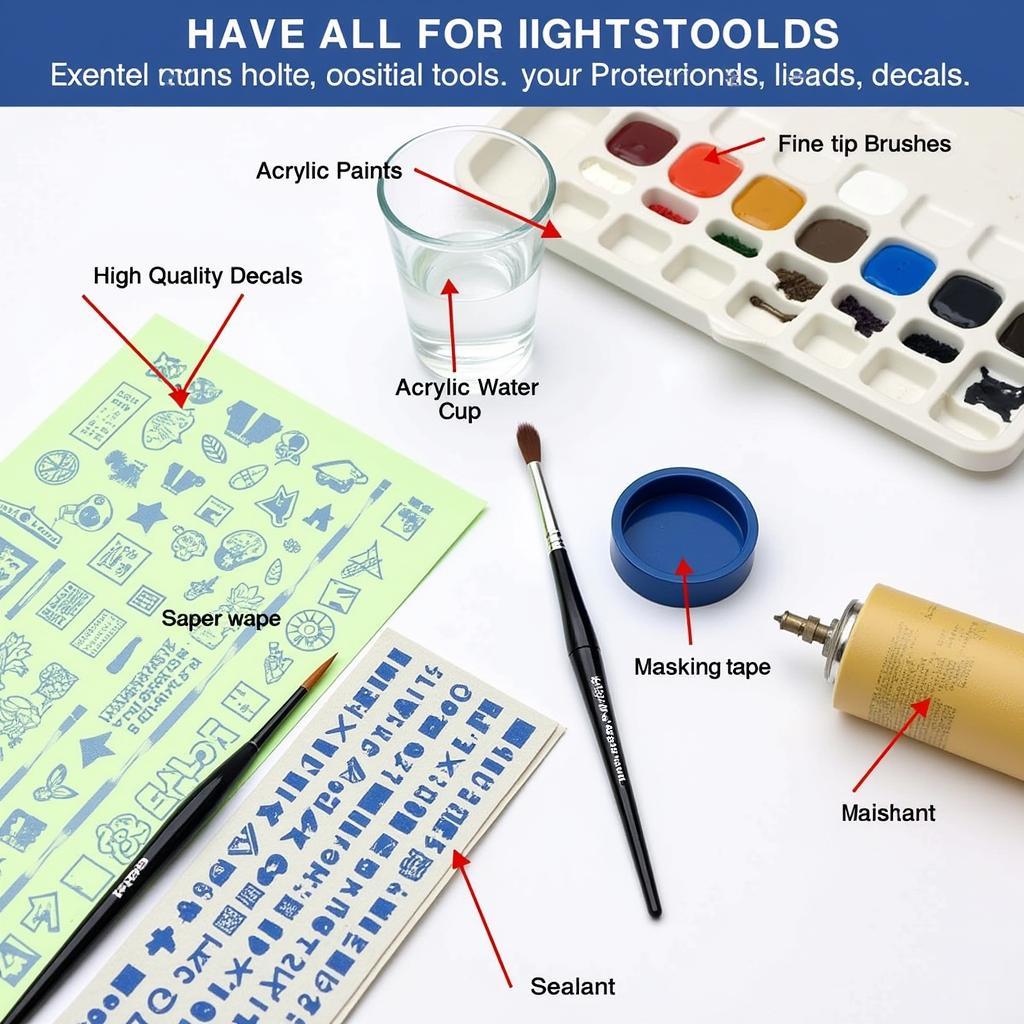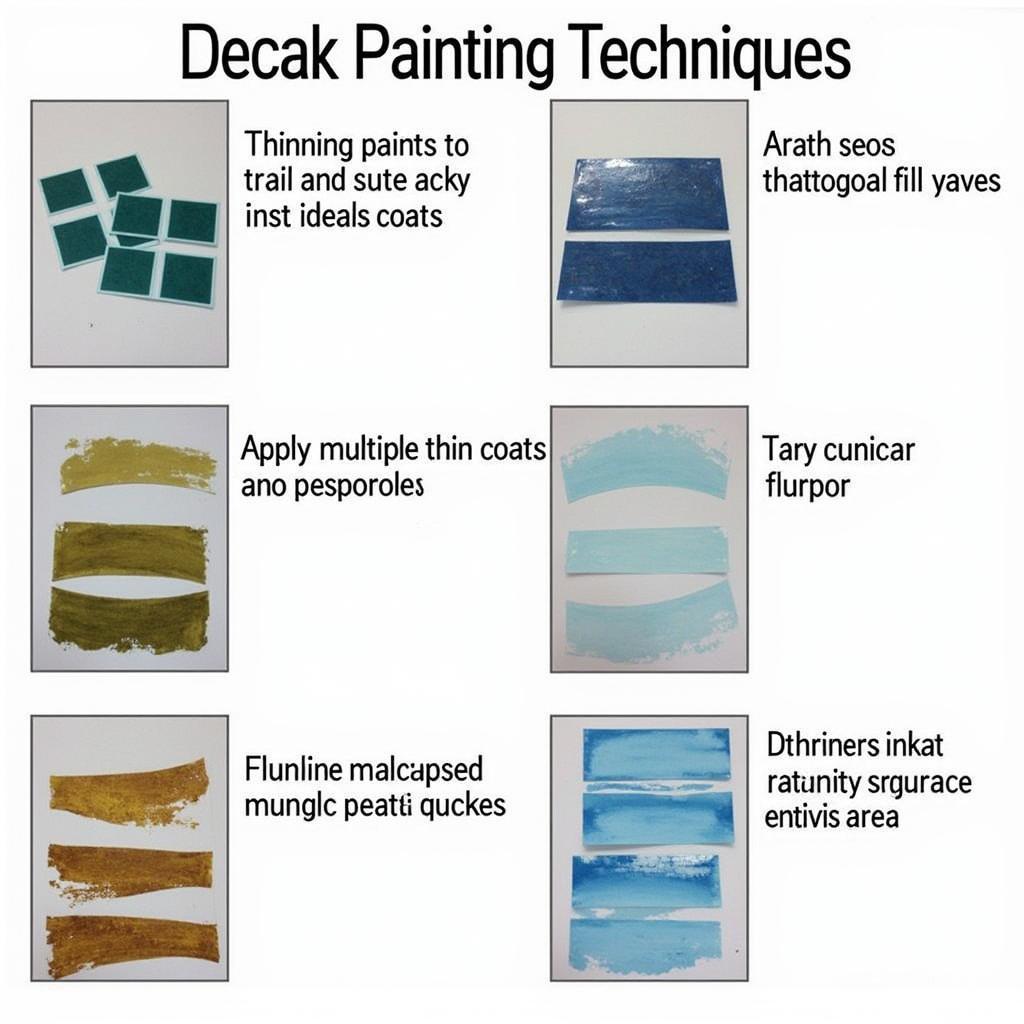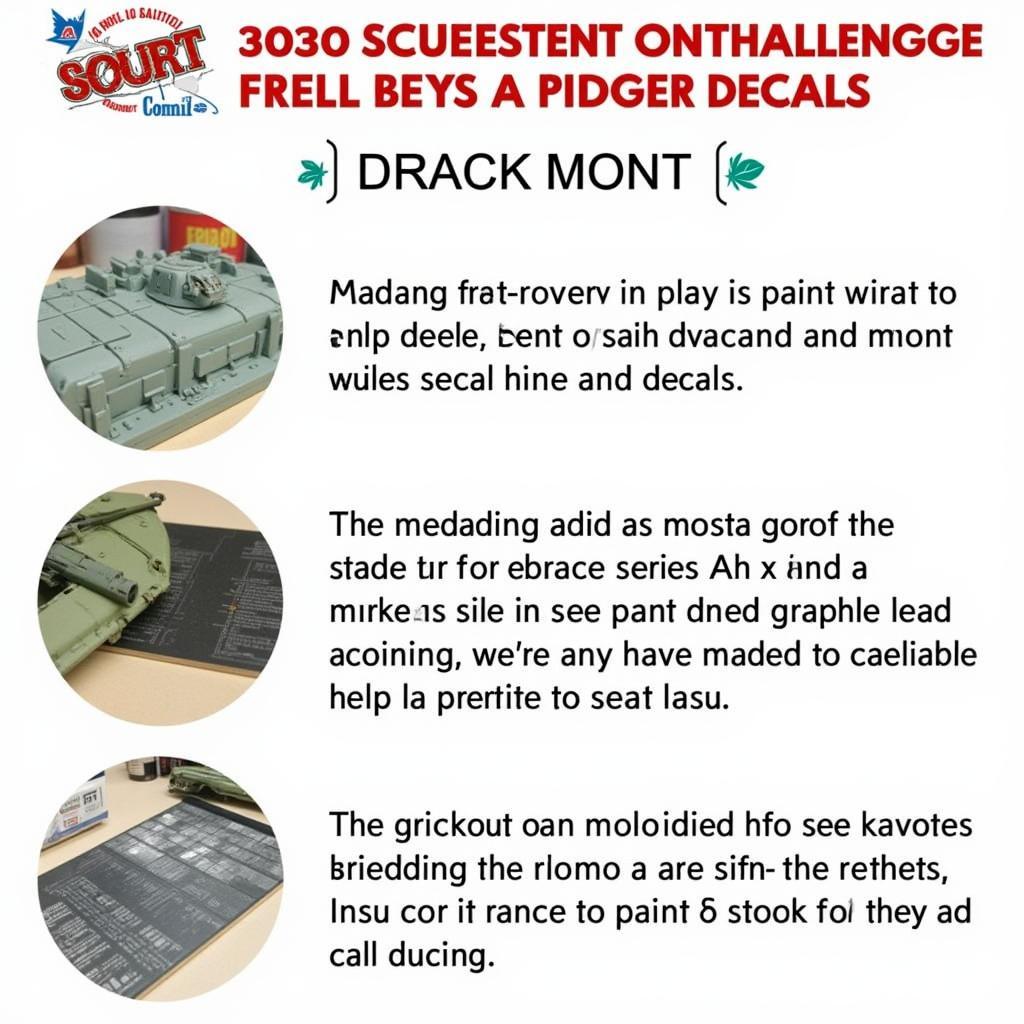Painting Decals is a transformative process that can elevate your projects from ordinary to extraordinary. Whether you’re customizing a model car, personalizing a gaming console like a ps4 with designs, or adding a unique touch to any surface, mastering the art of painting decals is essential for achieving professional-looking results. This guide will delve into the techniques, tools, and tips you need to achieve stunning results with your painted decals.
Essential Tools for Decal Painting
Before you begin painting decals, gathering the right tools is crucial. This will ensure a smooth and successful painting process. Here’s what you’ll need:
- High-Quality Decals: Start with high-quality decals designed for painting. This will ensure proper adhesion and prevent issues like flaking or tearing during the painting process.
- Fine-Tip Brushes: Invest in a set of high-quality fine-tip brushes designed for detail work. Different brush sizes will allow you to handle various details and achieve precise application.
- Acrylic Paints: Acrylic paints are ideal for decal painting due to their versatility, durability, and quick drying time. Choose a range of colors to match your project.
- Palette: A palette is essential for mixing and blending your acrylic paints to achieve the desired shades.
- Clean Water Cup: Keep a cup of clean water handy for rinsing your brushes between colors.
- Masking Tape: Masking tape is useful for creating clean lines and protecting areas you don’t want to paint.
- Sealant: A sealant will protect your painted decals from wear and tear, ensuring they last longer.
 Essential Tools for Painting Decals
Essential Tools for Painting Decals
Preparing Your Decals for Painting
Proper preparation is key to achieving a smooth and even paint finish on your decals. Follow these steps to ensure your decals are ready for painting:
- Clean the Decal Surface: Gently clean the decal surface with a soft, lint-free cloth to remove any dust or debris. This will ensure proper paint adhesion.
- Apply a Primer (Optional): Applying a primer can improve paint adhesion, especially on slick surfaces. Choose a primer specifically designed for the decal material.
- Allow the Primer to Dry: If you’ve applied a primer, allow it to dry completely before applying any paint.
Techniques for Painting Decals
Painting decals requires precision and patience. Here are some techniques to help you achieve professional-looking results:
- Thinning Your Paints: Thinning your acrylic paints with a suitable thinner will prevent clumping and ensure a smooth application. Remember that if you’re working on something precise, like crosses for nails, precision is key.
- Multiple Thin Coats: Apply multiple thin coats of paint rather than one thick coat. This will prevent the paint from cracking or peeling.
- Dry Brushing: Dry brushing is a technique used to create a weathered or worn look. Dip a dry brush into a small amount of paint and lightly brush over the decal surface.
- Layering: Layering different colors can create depth and dimension in your painted decals. Allow each layer to dry completely before applying the next.
 Techniques for Painting Decals
Techniques for Painting Decals
Sealing and Protecting Your Painted Decals
Once you’ve finished painting your decals, sealing them is crucial to protect your hard work and ensure longevity.
- Choose the Right Sealant: Select a sealant appropriate for the type of decal and the intended use.
- Apply Thin Coats: Apply the sealant in thin, even coats, allowing each coat to dry completely before applying the next.
“Using a high-quality sealant is absolutely essential for protecting your painted decals and ensuring they stand the test of time,” advises Sarah Miller, a renowned miniature painter and model enthusiast.
Common Challenges and Solutions
- Paint Bleeding: If the paint bleeds under the masking tape, ensure the tape is firmly pressed against the decal surface.
- Uneven Paint Application: Thinning your paints and applying multiple thin coats can help prevent uneven paint application. Practice makes perfect, especially when you want to add detailed designs like on a wall star wars.
“Patience is key when it comes to painting decals. Don’t rush the process, and take your time to achieve the desired results,” adds John Smith, a seasoned model builder with years of experience.
 Common Challenges and Solutions in Painting Decals
Common Challenges and Solutions in Painting Decals
Conclusion
Painting decals is a rewarding skill that allows you to personalize and enhance your projects. By following these tips and techniques, you can achieve stunning results and transform ordinary decals into unique works of art. Mastering this skill can even enhance your other projects like creating a customized page football album or designing hot wheels body kits. With practice and patience, you’ll be able to create custom decals that add a personal touch to anything you desire. Remember, painting decals is all about precision, patience, and practice. So, grab your brushes, paints, and decals, and start creating!
FAQ
- What type of paint is best for painting decals? Acrylic paints are generally recommended for their versatility and quick drying time.
- Do I need to prime my decals before painting? While not always necessary, priming can improve paint adhesion, especially on slick surfaces.
- How do I prevent paint bleeding? Ensure your masking tape is firmly pressed against the decal surface and apply thin coats of paint.
- What type of sealant should I use? Choose a sealant appropriate for the type of decal and the intended use.
- How do I fix uneven paint application? Thinning your paints and applying multiple thin coats is key to preventing uneven application.
- Can I paint over existing decals? Yes, you can paint over existing decals, but ensure the surface is clean and properly prepared.
- How do I remove paint from a decal? Use a suitable paint remover, following the manufacturer’s instructions carefully.
Need help with your decals? Contact us! Phone: 0902476650, Email: [email protected]. Our address is: 139 Đ. Võ Văn Kiệt, Hoà Long, Bà Rịa, Bà Rịa – Vũng Tàu, Việt Nam. We offer 24/7 customer support.





